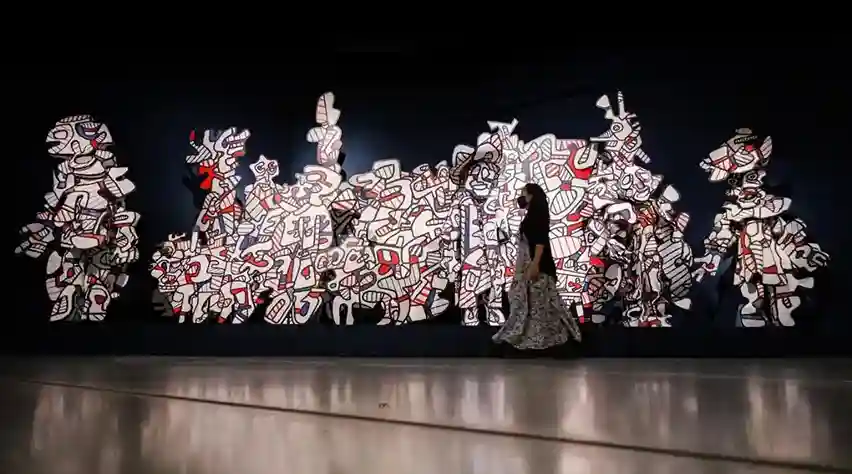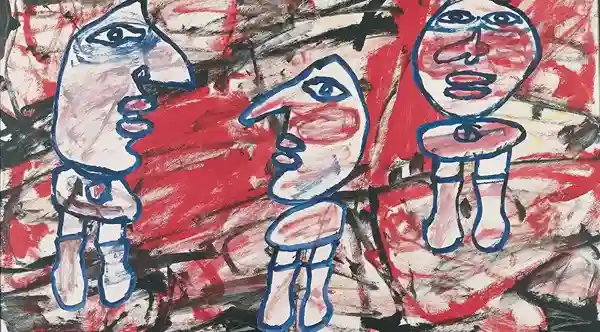Everything to Know About Jean Dubuffet
Jean Philippe Arthur Dubuffet, a trailblazing French artist, is celebrated for his unconventional and rebellious approach to art. Renowned for founding Art Brut (raw art), a movement that rejected traditional artistic standards, artist Jean Dubuffet’s artworks have profoundly impacted contemporary art. His innovative use of materials and distinctive style made him a key figure in the art world. His works are featured in major institutions globally, including the Collection de l’Art Brut in Lausanne, Switzerland.
Who Was French Artist Jean Dubuffet?
Artist Jean Dubuffet, born on July 31, 1901, in Le Havre, France, initially pursued a career in the arts, studying at the Académie Julian in Paris in 1918, before turning away from conventional academic art practices. Disillusioned with the established artistic traditions, he embarked on a journey to discover new ways of expression. This search took him to numerous countries eventually leading him to three separate trips to Algeria. Fascinated by the nomadic tribes, he developed his distinct style, connoting the ever-shifting cultural and artistic practices.

The Art of Jean Dubuffet
Jean Dubuffet’s art is marked by a unique, raw quality; indicative of his interest in the non-traditional. Jean Dubuffet Art Brut is another influential aspect of his practice. He coined the term to describe the works of outsiders, such as psychiatric patients, children, and untrained artists. These artworks were free from the constraints of formal education and traditional techniques, resulting in a more instinctual and expressive approach to creating art.

Typical Jean Dubuffet paintings are often textured, achievable by a mix of oil paints thickened with sand, tar, and straw impasto. He was the first artist to use the paste or bitumen in his art. To him, the straightforward, two-dimensional depiction of space held far greater substance than the overused idea of perspective. To interject perspective, he overlapped objects inside the picture plane.

Via Art Brut, Jean Dubuffet challenged the notion that art should conform to the rules of academic institutions. Instead, he championed the creativity of those on the fringes of society, celebrating spontaneity, unrefined & unconventional materials, and unfiltered emotion. At the start of 1962, Jean Dubuffet artworks used blue, black, white, and red. By the end of this decade, he would focus on sculpture, creating pieces out of polystyrene, subsequently painted with vinyl paint.

Jean Dubuffet artworks frequently depicted distorted human figures, faces, and landscapes; making it a seamless blend of abstraction & figuration. Through this, he could communicate complex emotions and ideas in a direct, visceral way.
Jean Dubuffet Sculptures
Beyond Jean Dubuffet paintings, he also made significant waves in the world of sculpture. A natural extension of his two-dimensional work, every Jean Dubuffet sculpture combined his raw aesthetic and a three-dimensional form. For example, Monument Au Fantome by Jean Dubuffet (Monument to the Phantom), was created in 1977. Located in Houston, Texas, it embodies Dubuffet’s bold approach to art, blending whimsy, abstraction, and weirdly enough, a sense of the surreal.

The Monument au Fantôme by Jean Dubuffet challenges conventional notions of form and function. The sculpture’s seven distinct forms—a chimney, church, dog, hedge, mast, phantom, and tree—reflect the staple of Houston and are made of painted fibreglass and steel frames. This work, like many of his other sculptures, invites viewers to engage with its unusual shapes and textures, offering an experience that is both physical and psychological.
Image Courtesy – Apparel Music
Contributor







